A Serious Injury Changed Cyclist Ian Mackay’s Life. Trails Helped Him Rebuild It.
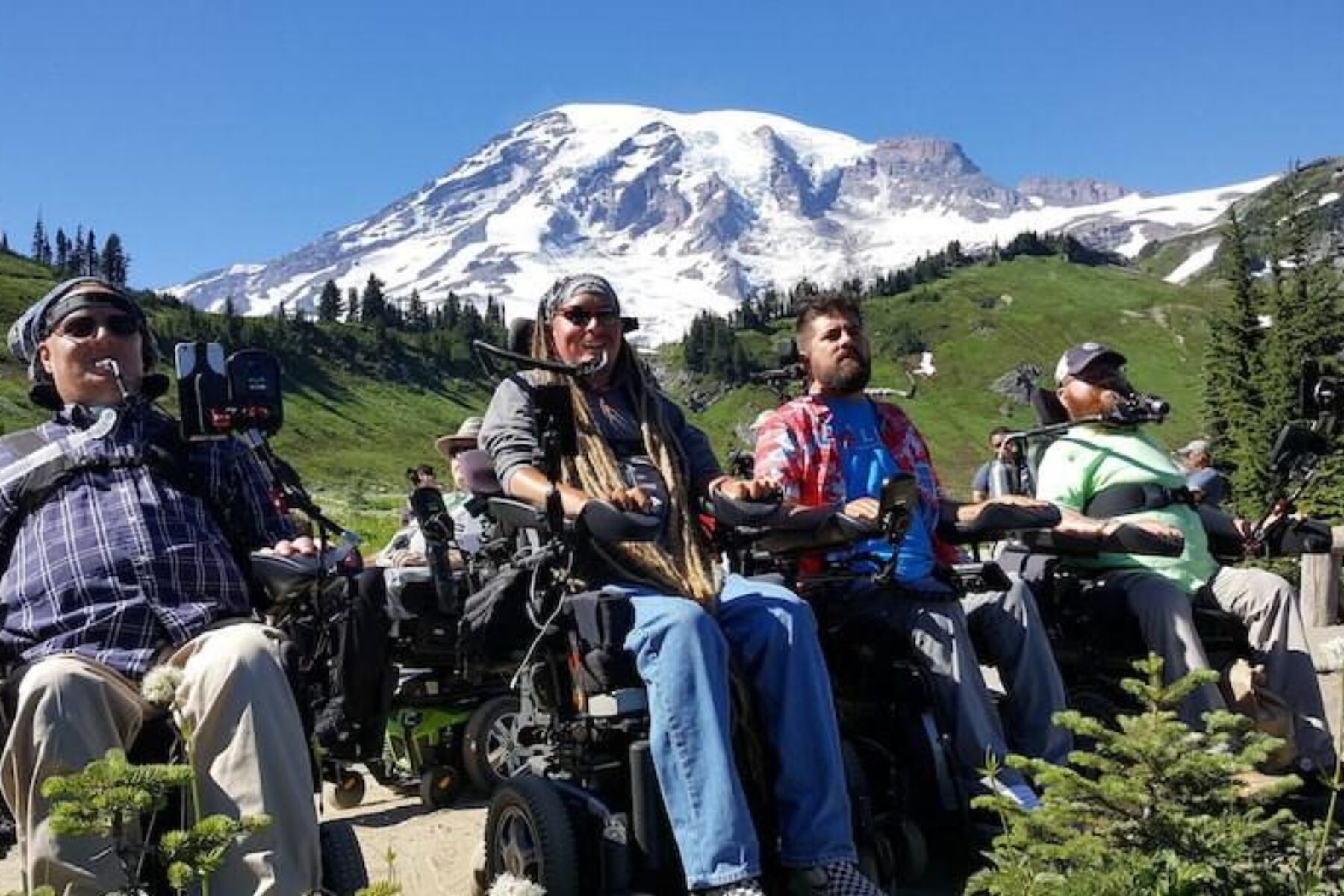
It takes a certain kind of dedication to get out on a trail every day. Like, every day. Seven days a week. Rain or shine. Scorching days, freezing days and every kind of day in between. “The last day I missed was Halloween 2016,” said Ian Mackay. He surpassed consecutive day number 1,000 in July.
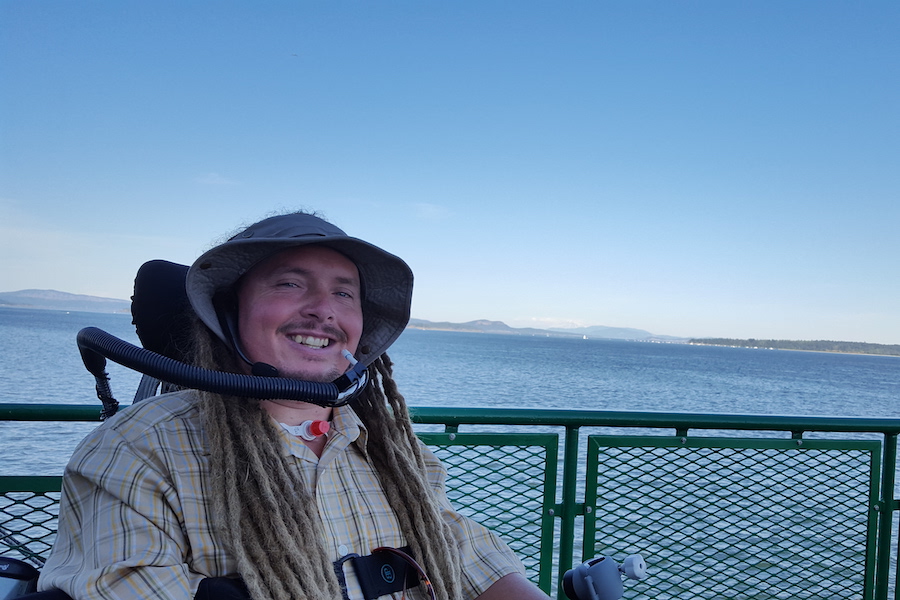
He wasn’t always so dedicated, though. A self-described avid cyclist in college, he certainly spent time outdoors, but it took nearly losing everything to instill the passion he has today. “I was 26 years old when I broke my neck,” Mackay explained. He was cruising home from classes at the University of California Santa Cruz in 2008 on a bike path when he hit a patch of gravel, lost control and slammed headfirst into a tree. “My helmet probably saved my life,” he said, but the impact left him paralyzed from the neck down.
“You never can expect something like that,” he said. “You can’t plan for that. Your whole life gets turned upside down. It was … a dark time for me.” He moved back to his hometown of Port Angeles, Washington, to live with his mother and spent a couple of years trying to figure out how to live his new life as a quadriplegic. Understandably depressed, he said it took some time to come to grips with his condition, spending “a couple years sitting around watching the Andy Griffith Show.”
“That trail is where I found my solace.”
—Ian Mackay, Founder, Ian’s Ride
Nature’s the Best Medicine
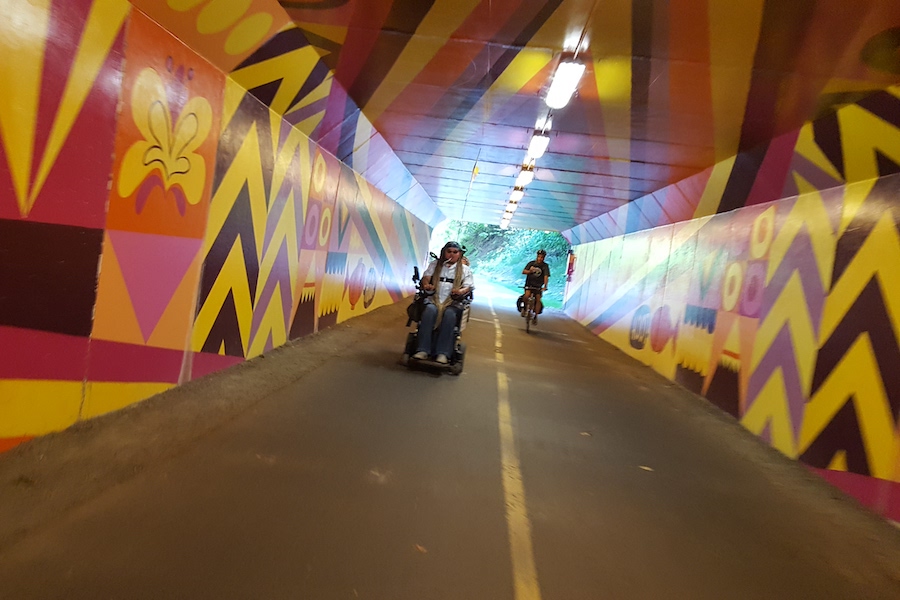
A motorized wheelchair powered by sip-and-puff inputs coupled with the ever-improving voice recognition capabilities of a smartphone offered Mackay a degree of independence, and allowed him to get outside without a caregiver at his side at all times. The Olympic Discovery Trail, a rail-trail that runs near his home, called to him. “That trail is where I found my solace,” Mackay said. “I was a field biologist before. I spent a ton of time outside.” Now, he said, “I could start exploring the Pacific Northwest on my own and appreciate those loves I had before I was injured.”
Those loves grew into a passion and, from there, a dedication. “Nature’s the best medicine,” he said. “I love it out there. It can be easier to be out there than inside—though I have caregivers and family who might disagree when they have to shovel snow for me.”
As Mackay’s daily forays on his nearby trail proved successful, he found himself putting in up to 20 miles a day on his chair. After two years of daily explorations, Mackay felt that he’d exhausted all the trail options in his area and was looking for something more challenging. “I joked with my mom about riding across the state. She laughed—but within a few months we ironed out the details and made it happen.”
Those details included provisions for charging and swapping out battery packs for his motorized chair, and a small cadre of helpers to support the 11-day trip. The ride, from Canada south across Washington and into Portland, Oregon, “inspired a lot of people, I guess,” Mackay explained in an understated way.
“The more we can get people out exploring our world, the better they’ll be for it.”
—Ian Mackay
Ian’s Ride
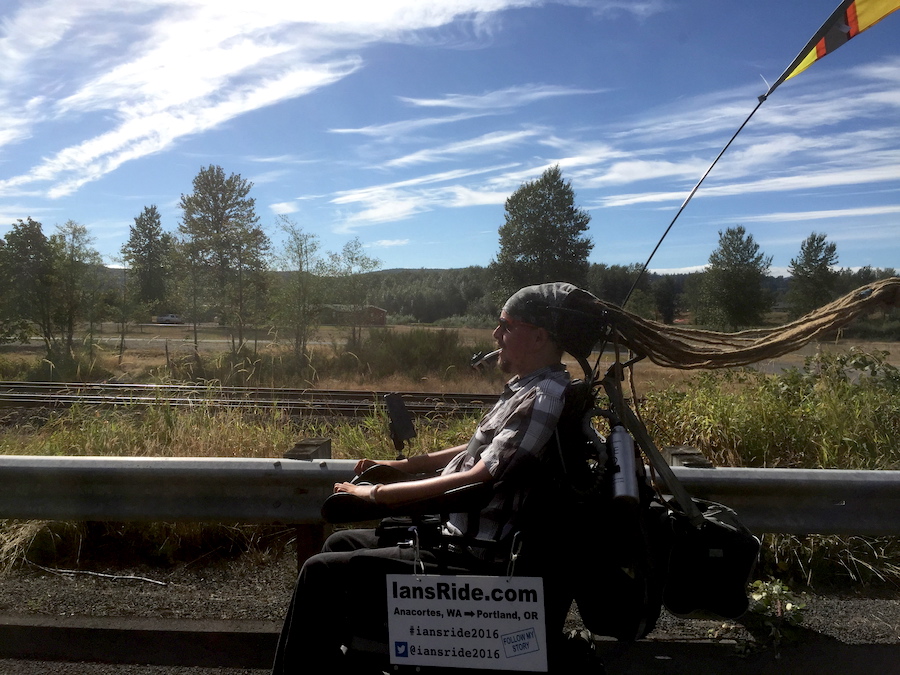
With the help of supporters interested in helping him create a nonprofit organization, Ian’s Ride was born in late 2017 to help continue Mackay’s work toward outdoor advocacy. Along the way, Mackay has become a prominent voice for people with disabilities and an advocate for more accessible trails. He’s given multiple talks on the subject, delivered the keynote address for the Washington Bike Summit, been named a trail leader by the Washington Trails Association, and personally lobbied his congressional delegation during a trip to Washington, D.C. “It’s given me a bigger platform,” said Mackay.
And his inspiring rides keep on rolling, too: He recently wrapped up a 500-mile rail-trail and on-road ride from Coeur d’Alene, Idaho, to Port Angeles, and he embarked in August 2019 on a Sea to Sound trip to traverse 70 miles of the wheelchair-accessible portions of the Olympic Discovery Trail.
One of the more gratifying elements for Mackay has been the opportunity “to get more people in wheelchairs out on trails,” he said, citing a friend named Todd Stabelfeldt who Mackay described as a “boardroom” personality to his own “breakroom.” Stabelfeldt joined the Coeur d’Alene ride, and “I saw his smile and excitement, pushing his chair and seeing how far he could go. It made me appreciate what I was doing to see someone whose world isn’t trails really enjoying it.” And, he added, Stabelfeldt has gone out on more rides since then.
“My motto is ‘get outside,’” affirmed Mackay. “The more we can get people out exploring our world, the better they’ll be for it.”
Leveling the Playing Field
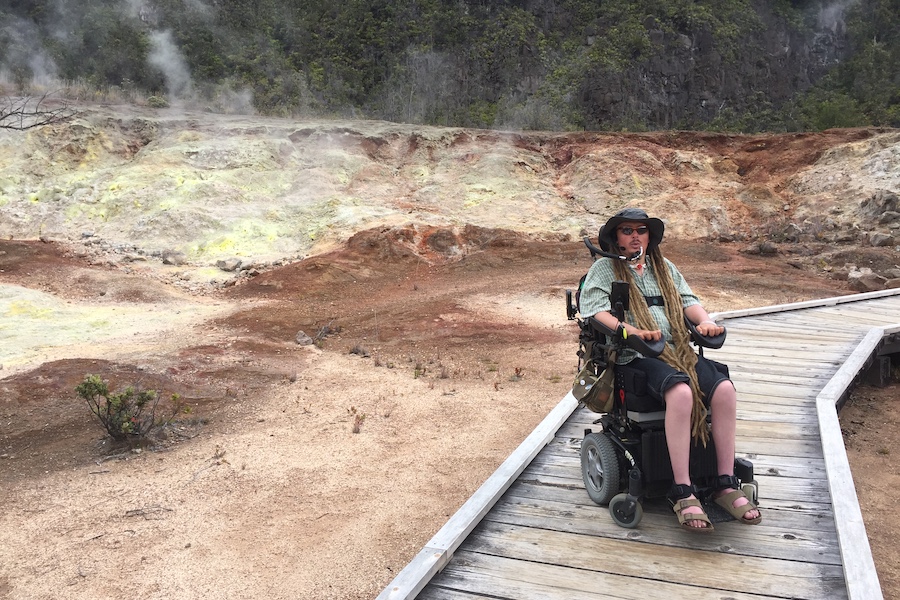
For a man dependent on relatively smooth surfaces that his powered wheelchair can handle, he’s adamant that he doesn’t want “to pave the world. I’m a naturalist at heart,” he said. “I love our wild lands; I just want to be able to access them.” He recounted stories of bolts literally shaking loose from his chair—and feeling like his teeth weren’t far behind—after extended trips on rough surfaces, and suggested that there were steps trail designers could take to better accommodate people with limited mobility. The most obvious step, he said, is to avoid using steps altogether, along with steep slopes whenever possible; he suggested that switchbacks be used instead.
The biggest obstacle for wheelchairs users, though, is often not the surface itself, he explained, but the uneven transitions between trail and trestle, or other places where two different trail surfaces meet. “It’s almost a step sometimes. It’s the same thing for a road bike; those can flatten a tire,” he stated, noting that it was probably simplest for designers to keep stroller-pushing parents in mind. “Their needs generally align with folks in chairs.”
Mackay has talked to Washington State officials about reconsidering the way that accessible trails are designated; all too often, he said, a prominent sign designating a trail as such “means it’s a paved, half-mile, 1 percent grade that doesn’t include much” of what a wheelchair-bound user might want to see. He suggests that with a rating system akin to ski slopes, users could make informed decisions about whether to try for punishing black diamonds or go easy with a gentle green route. “What’s accessible for me [in a powered wheelchair] might not be as accessible to someone in a manual wheelchair,” he noted.
Big Wheels Keep on Turnin’
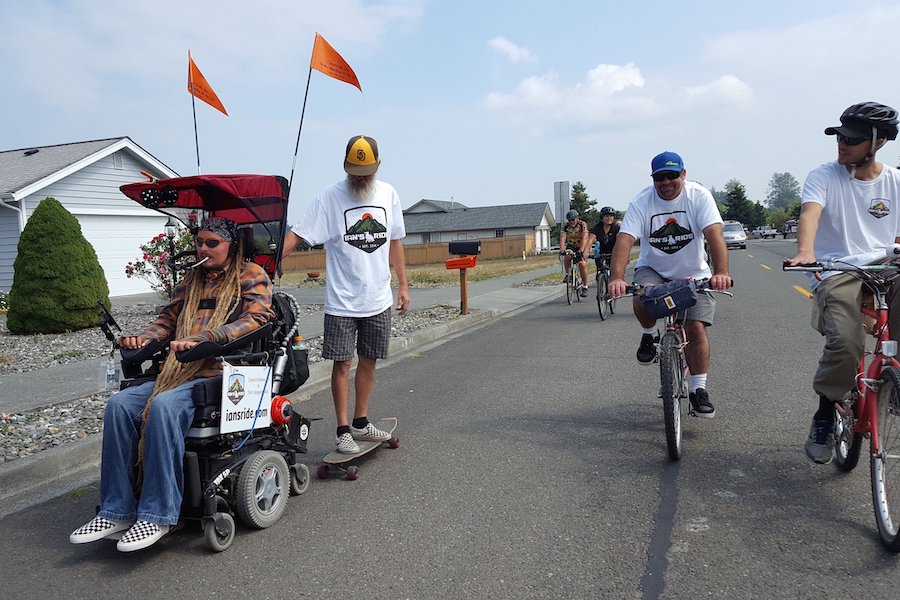
Mackay has had discussions with his wheelchair manufacturer about a touring version that would be better suited for the kinds of long-distance routes he tackles. “Wheelchair touring is more of a thing now,” he said. “Range is an important factor, and a more outdoor-focused version is in demand.” In the absence of a commercially available long-distance chair, Mackay swapped out his stock batteries for large, high-efficiency lithium units and worked with an electrical engineer friend to wire in a second battery that mounts to a custom-fabricated tray on the back of his chair. “I can get my chair to go 50-plus miles on a charge, at least on flat ground,” he affirmed.
It would be fantastic, said Mackay, to get someone like Tesla’s Elon Musk interested in pursuing improved battery technology for people in the disability community, doing for powered wheelchairs what the company has done for cars.
A further-enhanced touring version of his chair was on Mackay’s mind as he talked about someday rolling along a completed 3,700-mile Great American Rail-Trail to Washington, D.C.; the first leg of the still-developing route is the Olympic Discovery Trail that he knows so well. “It’s definitely on my mind. I might need a slightly faster chair.”
This story was reprinted from the Fall 2019 issue of Rails to Trails magazine in an edited format.

Donate
Everyone deserves access to safe ways to walk, bike, and be active outdoors.



